Title: Self-Sustainment Study
Crew Member: Sarah “Ceres” Guthrie
Role: Commander
This study focuses on the efficiency of a self-sustainment diet for astronauts in spaceflight and on interplanetary missions. Meals are prepacked, dehydrated, and curated to the individual astronaut’s needs. Understanding the metabolic needs of astronauts and requirements for self-sustainment will enable a low-impact resource management capability for early exploration. Meals use no grid energy and in some cases are heated purely by solar energy (placing canisters in the window). As this mission closes, preliminary data shows that one female analog astronaut prepped with 15lbs of sustenance used ~28 liters of water (this includes meal prep, hydration, and hygiene), produced less an 2 lbs of material waste, and consumed ~21,000 calories over 11.5 days.
Title: Dandelion Study
Crew Member: Sarah “Ceres” Guthrie
Role: Commander
This study was a community submission by a 2nd grader from Millersville, Maryland who aspires to be an astronaut. The submission inquired if dandelions (Taraxacum officinale) can grow in Martian regolith. Crew 274 was happy to comply and donated Martian and Lunar regolith from ExoLabs to the study. The dandelions did not sprout, but Crew 274 was happy to mentor a budding astrobiologist and hopes this project continues to inspire young minds.
Title: Cosmic Fruit Study
Crew Member: Sarah “Ceres” Guthrie
Role: Commander
This study was a community submission by a 2nd grader from Millersville, Maryland who aspires to go to Mars as an astronaut. The submission asked what happens to fruit exposed to the elements on Mars and if they would be protected in the habitat. Crew 274 was happy to support this study in conjunction with the logistics cache. HSO Pender accommodated the fruit (two oranges) in his logistics cache and placed the cache and the fruit on the “Martian terrain.” Two additional oranges were placed in a crate next to the cache. Both samples had temperature monitors and radiation tags. As the EVA crews access the cache over the mission duration, the oranges will be monitored, and data collected on their performance. At the end of the mission, it was observed the interior oranges became soft and deteriorated faster (with soft spots), likely due to warmer temperatures inside the cache. The oranges left outside the cache remained firm and undamaged. Neither of the orange samples detected radiation. While there is more data to analysis from this study, we hope this project continues to inspire young minds to inquire about exploration.
Title: Evaluating Contingency EVAs and Rescue Techniques for Planetary Surface Missions
Crew Member: Sarah “Ceres” Guthrie
Role: Commander
This study investigates contingency extra-vehicular activities methods and protocols. It is a continuation of a study from previous analogs but enhanced over time. This specific study will utilize an engineered rescue vest. It has yet to be performed at this point in the mission. Three EVAs were completed using single and two-person carrying of the KURT dummy at Gateway of Candor. This observational study aims to develop assistive rescue devices and methods for contingency EVAs. While data is still being analyzed, the preliminary results and feedback showed that rescues are a challenge and require thoughtful consideration. The vest grip points aided rescues to be possible.
Title: Digital Measurement of Stress and a Potential Stress Mitigation Technique in Analog Astronaut Environments
Crew Member: Alexis “Kepler” Lojek
Role: Crew Engineer
The crew are wearing their Garmin devices and it is tracking their stress levels based upon Heart Rate Variability. Focused breathing as a potential; mitigation technique for stress begins this evening after the Comms windows closes. Stress levels are being tracked and recorded via Garmin Connect. The data collected from MDRS and other analogs is showing that in order to be effective at reducing stress in any way, training in focused breathing techniques is required, while a long-term analysis of focused breathing is pending after further data collection during the next two weeks.
Title: Heliophysical Phenomena
Crew Member: Noah “Phoenix” Loy
Role: Crew Astronomer and Heliophysicist
Musk Solar Observatory operations have rendered many successes at this halfway point mid-mission. Dozens of heliophysic phenomena have been observed in the forms of solar dark spots, solar chromosphere granolas, solar prominences, and convection cells. Over 110k images/videos have been captured. Some of these have been analyzed through astrophotography software. Flats have been integrated across 30k solar dark spot images. The size, distribution, and frequencies of solar granules and solar dark spots have begun to be measured. All in all, lots of clean and useful heliophysics data have been gathered, saved, and analyzed for a solar cycle 25 report. The data collected from solar observation is now ready for the next stage of analysis through a personal python analysis tool. The findings from this software analysis will enable a report to Space Operations Command regarding an operational plan to safeguard US orbital assets in the likely event of a solar superstorm breaching Earth’s sphere of influence.
Title: Case Study of the MDRS Design as a Planetary Surface Habitat
Crew Member: William “Titan” O’Hara
I have made significant progress on my research goal. In the first half of the mission I have completed a detailed review of the architecture of the Musk Observatory, Science Dome, Green Hab, RAM and connecting tunnels from the POV of a crew member. In each case I have created sketches and completed a detailed questionnaire built to systematically review each habitable space. The data collected thus far captures characteristics such as layout, use-of-space, activity volume allocations, traffic flow, outfitting and stowage volumes. Data collection for the habitat architecture case study concluded nominally with generation of 20+ pages of notes plus sketches.
Title: Generating Multi-bandpass Lightcurve (LC) Data on HADS Variable Star V0799 AUR
Crew Member: Salina “Nova” Peña
Role: Crew Astronomer
Images of HADS Variable Star V0799 AUR were taken before the mission. Fifteen images were taken on January 13, 2023, using the filter “V,” and sixty were taken on January 27, 2023, using filters B, V, and R. Once the correct duration for each filter was established, then 180 images were taken at MDRS using the same filters. So far, there have been two days where no observations were made due to weather conditions. Therefore, they were canceled. While in the waiting process, I started the calibration process with the first set of images in the 45s duration visible. The raw images collected from the MDRS-14 Robotic Telescope (using filters V, B, and R) are being used to monitor the flux in HADS Variable Star V0799 AUR. Further analysis is needed and images will be collected up to the end of February.
Title: Germination Studies of Long-Duration Space-Exposed Seeds
Crew Member: Tyler “Houston” Hines
Role: GreenHab Officer
Approaching the mid-way point of the mission, all expected research progress and general germination are going according to plan. Following the initial setup of supplies along with consistent daily maintenance and watering of nutrient-rich additives, early signs of germination were noted as early as Sol 3 in the mission, specifically with the cress and broccoli, with the other sets of microgreens being closely monitored in parallel. As a significant and optimistic milestone in the anticipated seed germination timeline, early signs of LDEF seed germination were noted on the morning of Sol 6, with the plan to continually maintain current temperature and humidity levels in addition to watering times to support future growth. Based on the overall results, while data from the secondary microgreen seed set was shown to meet germination expectations, the most significant results from the primary extended space-exposed LDEF seed set show that such seeds can not only germinate following exposure to a high-radiation environment in Earth orbit, but can initially germinate in the nutrient-lacking simulated Martian regolith, thereby proving the foundational durability of certain nutrient-dense seeds and crops that can be potentially utilized for future crewed missions to Mars.
Title: Supply Cache Use for Extension of Human Exploration on Mars
Crew Member: Nicholas “XMan” Pender
Role: Health and Safety Officer
Three of seven EVAs planned for this research experiment have been accomplished. The first EVA series (EVAs 3 and 4 combined) established a baseline distance of how far is reasonably possible to travel on foot in 30 minutes while in a space suit. A distance of 1 mile per 30 minutes of walking was discovered, which allowed for future planning of the contingency scenario route utilizing the supply cache. This phase also presented the opportunity to test staking into the local soil for future supply cache solar panel placement. This test was conducted on top of both Kissing Camel Ridge and on the side of Cow Dung Road. Finally, I was also able to prove the ability to use a hydration system with the space suit and consume GU energy gel packs while in the space suit. EVA 5 demonstrated effective deployment of the supply cache as a mobile EVA support platform, positioning it 2 miles (1 hour) from the hab. Upon activation, all powered systems for the cache were operating nominally. Initial readings on interior/external temperature were performed, as well as power consumption data and initial condition. EVA 6 consisted of a status check on the cache to ensure it was operating nominally, and it certainly was. The cache was maintaining temps above 40 degrees and power consumption of the internal heater was negligible. One external concern, it was found that the ropes securing the solar panels to the ground had loosened. Stakes were repositioned to ensure a secure placement. Follow-up surveys on and debriefs on EVA’s 5 and 6 validated the experiment design and also revealed potential design improvement recommendations for the cache system. The cache is now ready for its big test in an emergency scenario exercise on EVA 7. The supply cache concept explored at MDRS was the first research of its kind conducted in a Mars-analogous environment. Preliminary results show that supply cache technology applications in the field of space exploration are effective, particularly in analog, and show great promise for shaping EVA safety policy and processes.


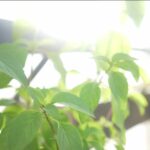
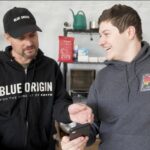
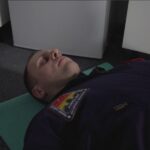

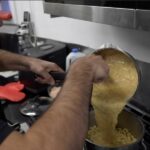
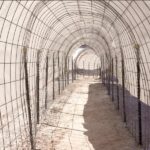
You must be logged in to post a comment.